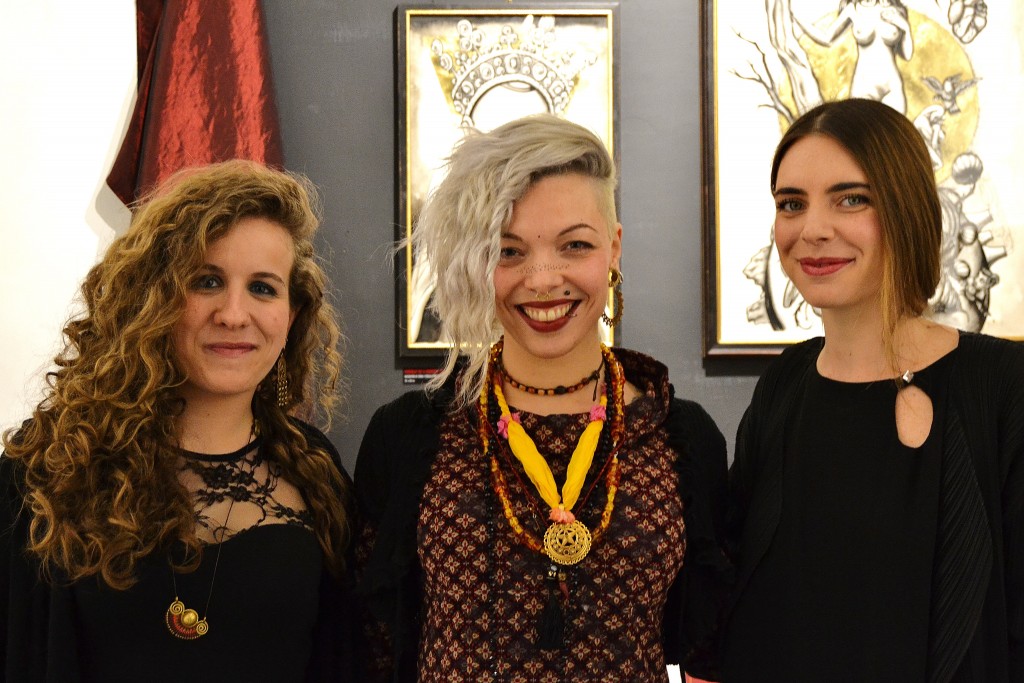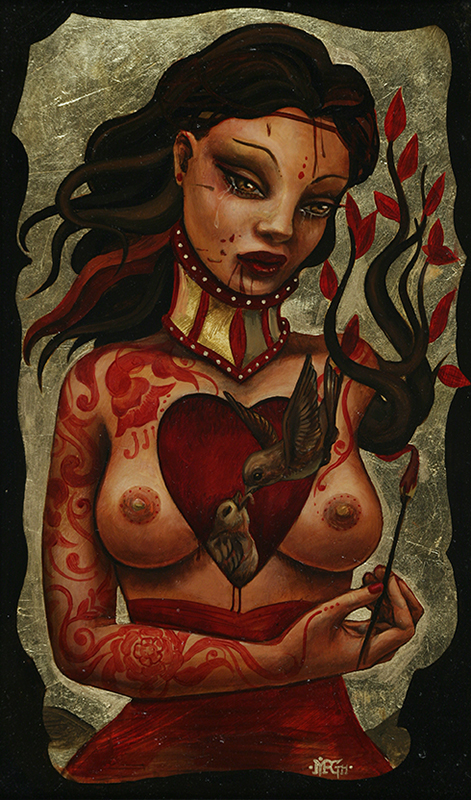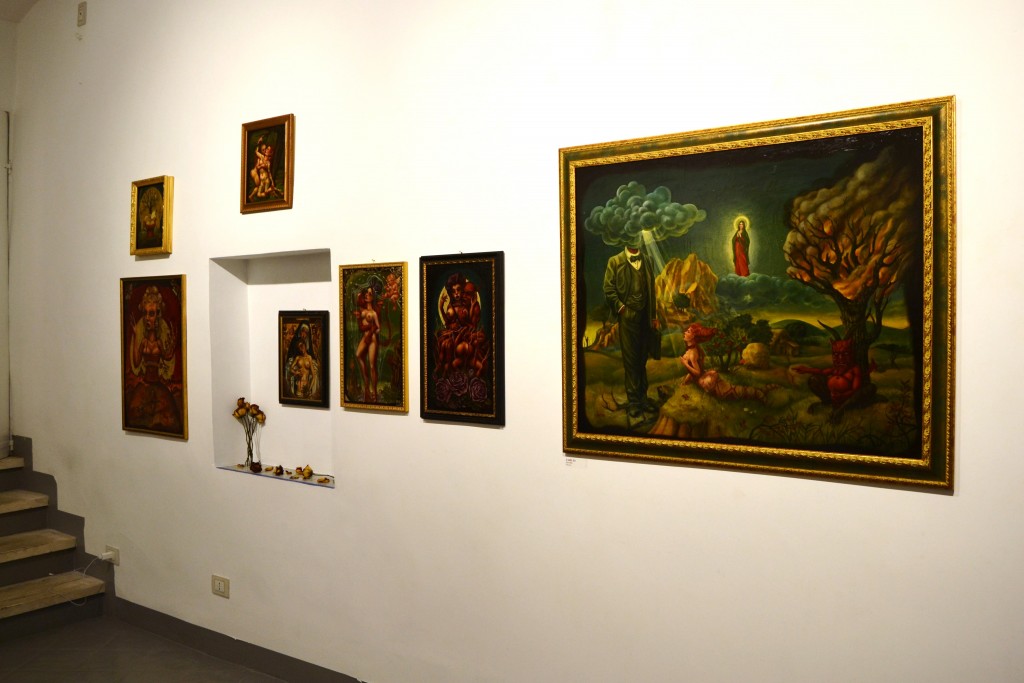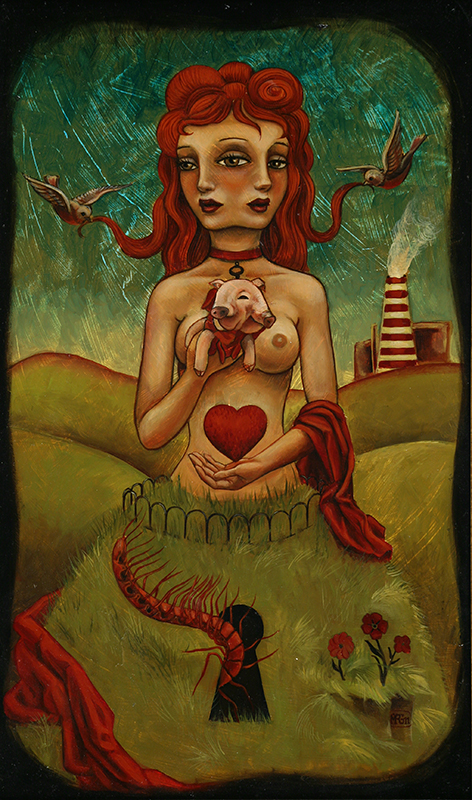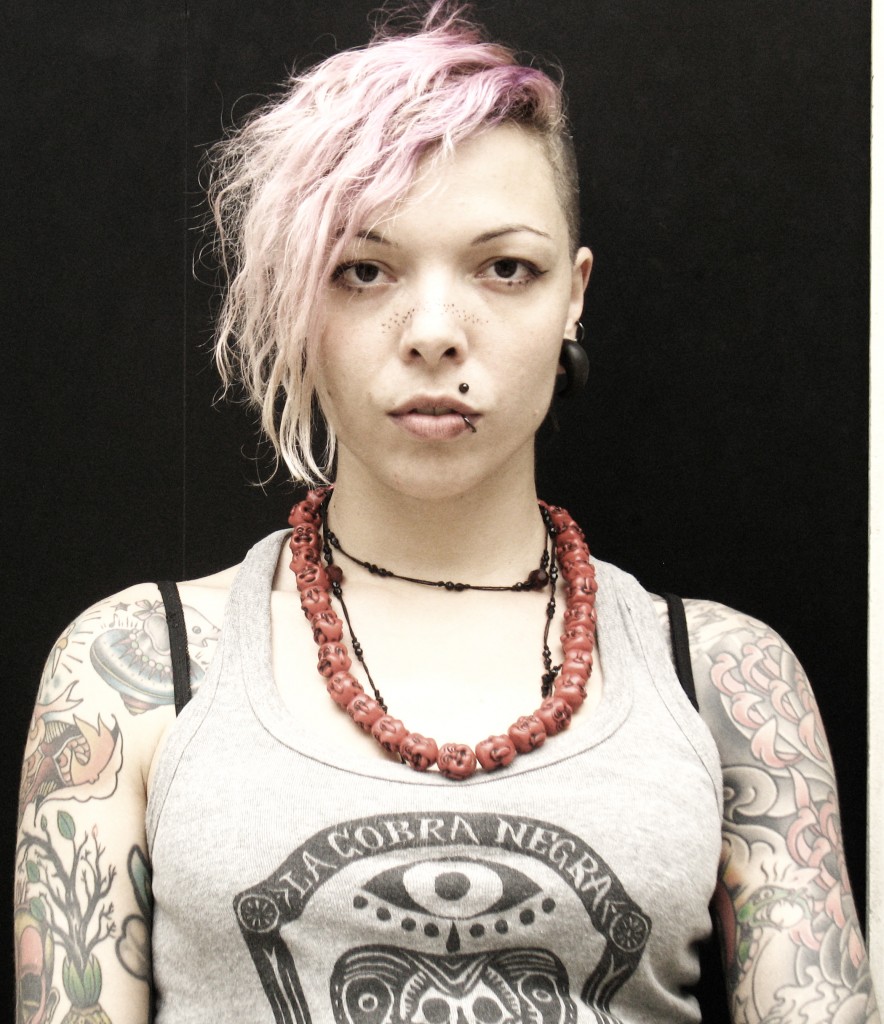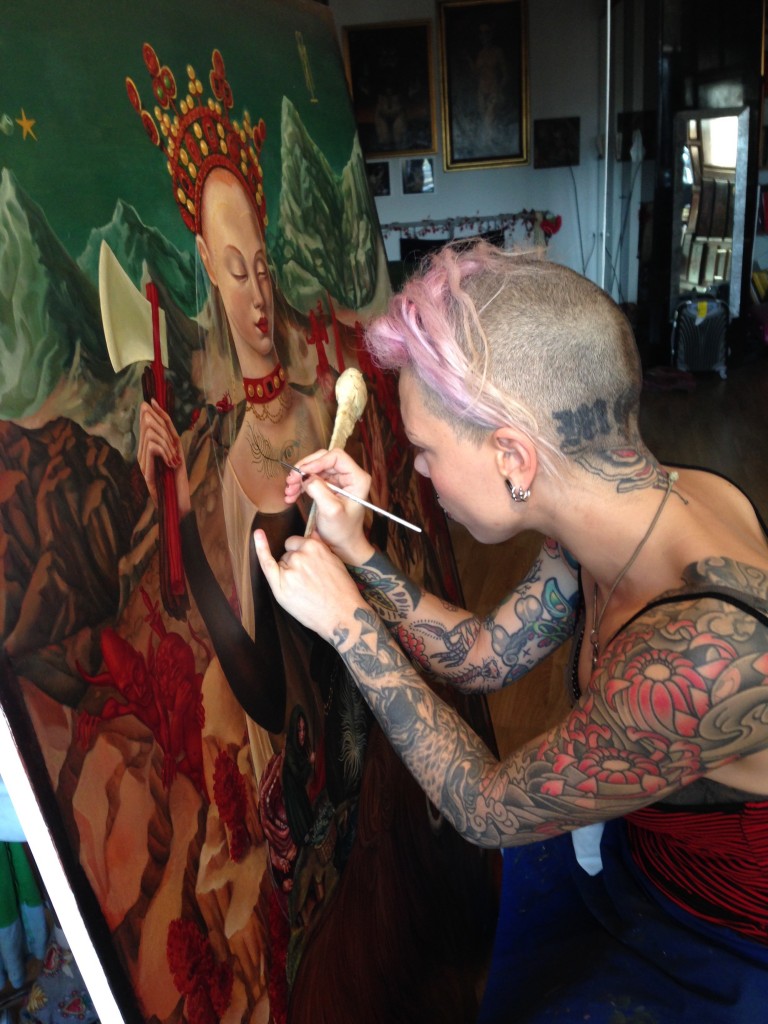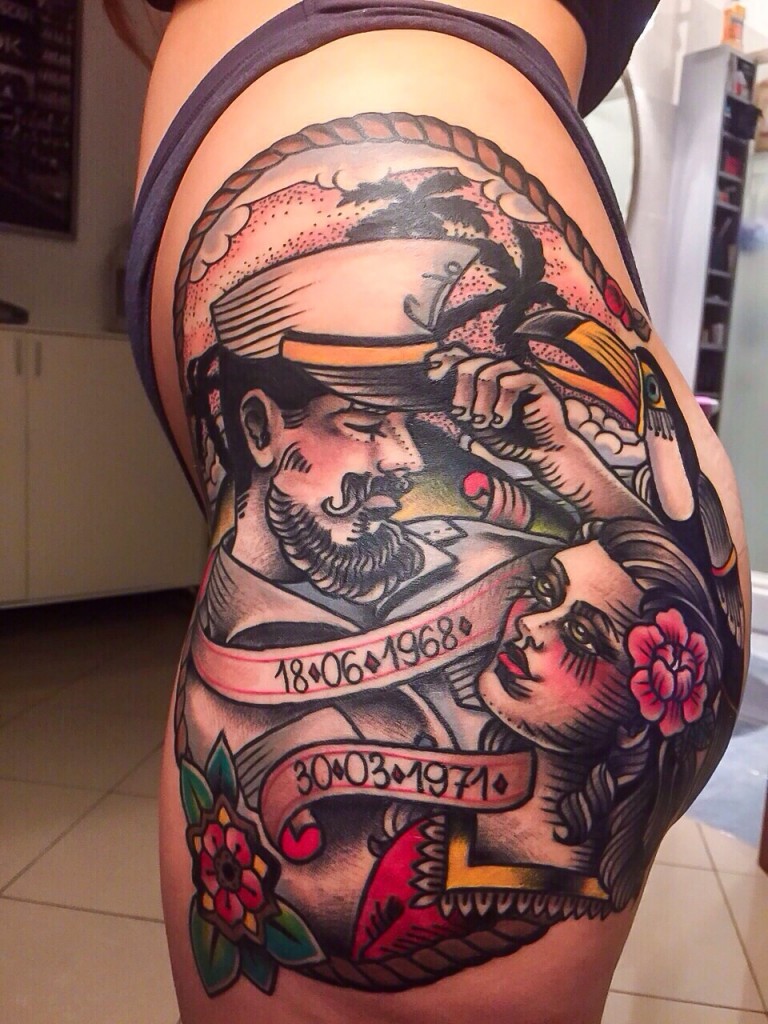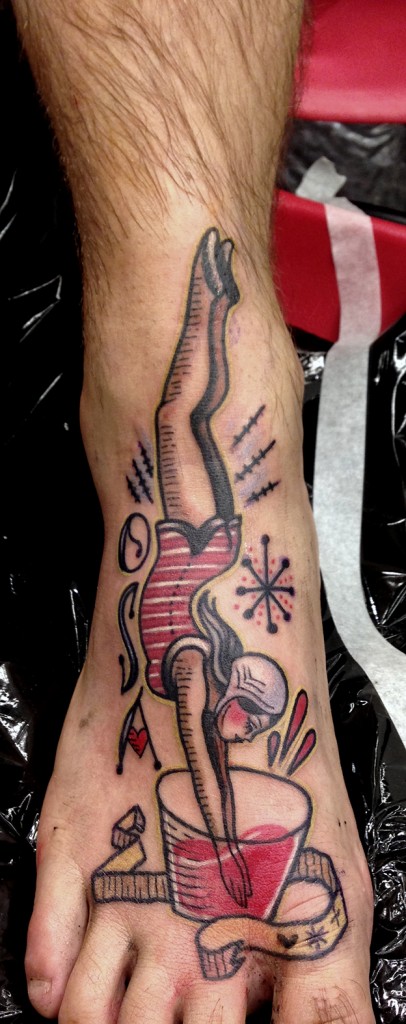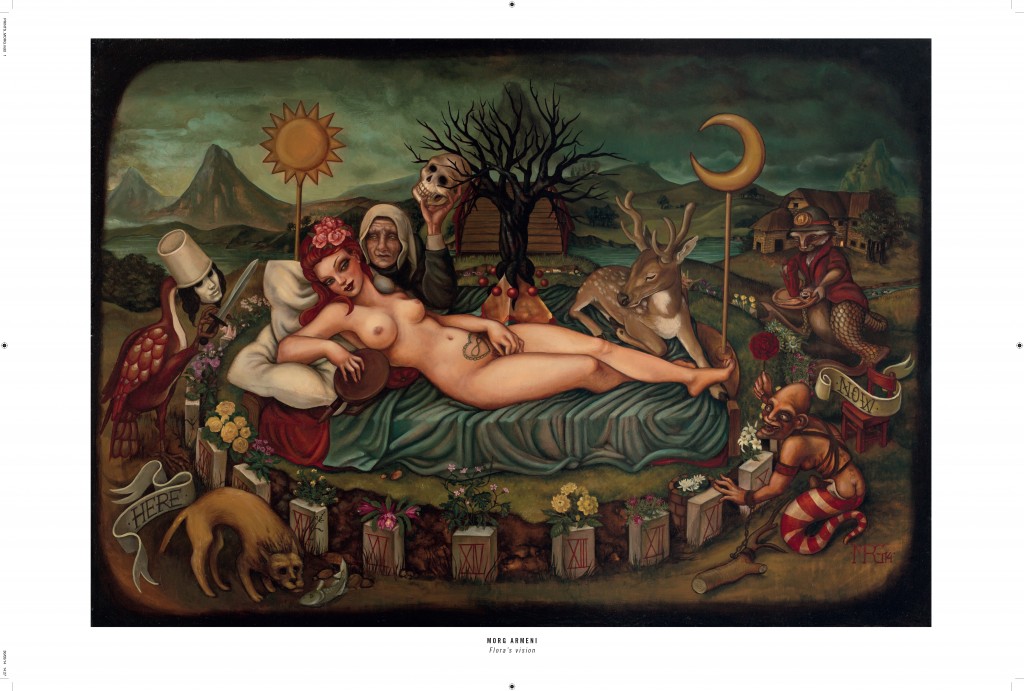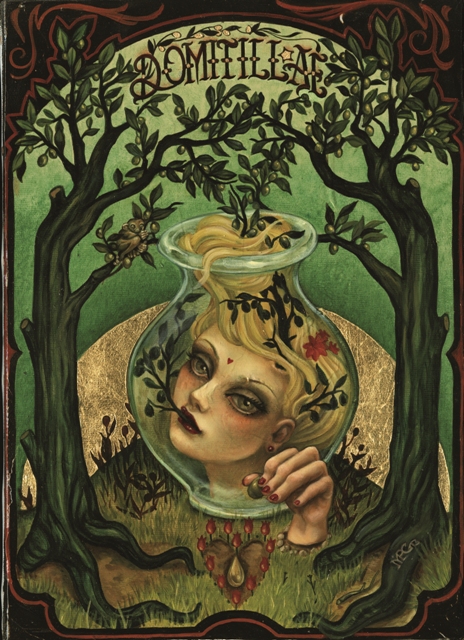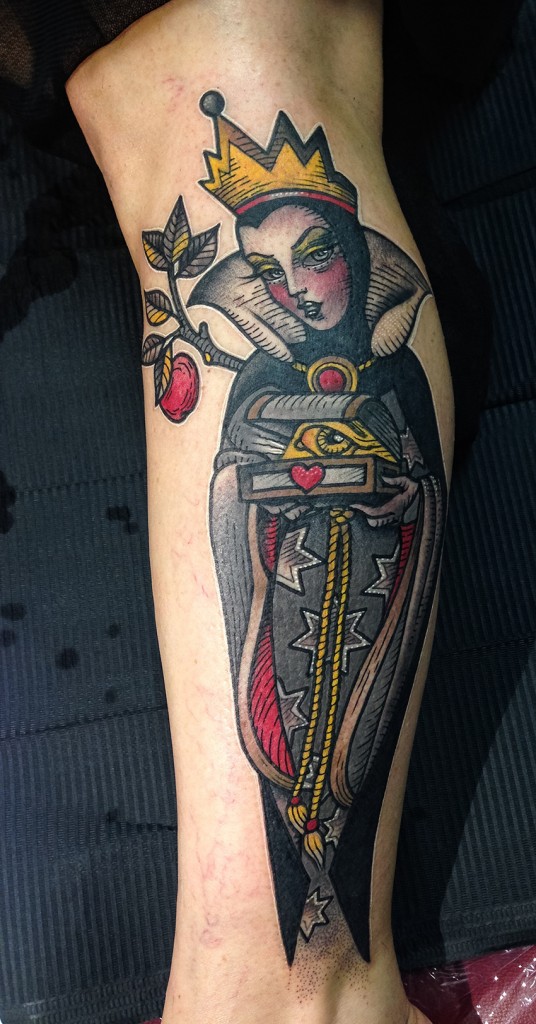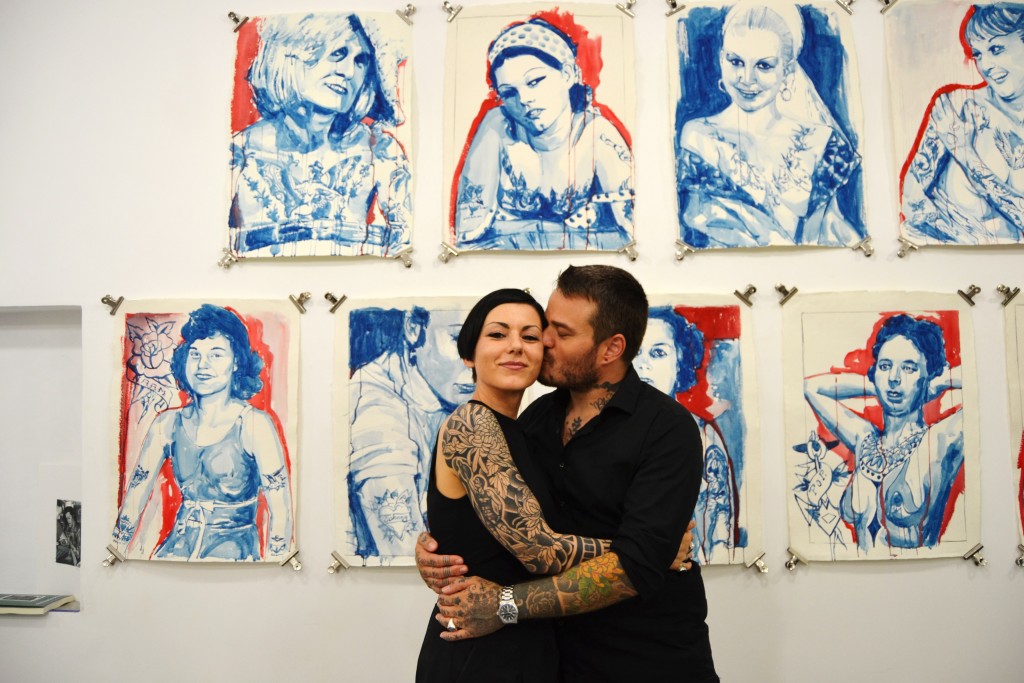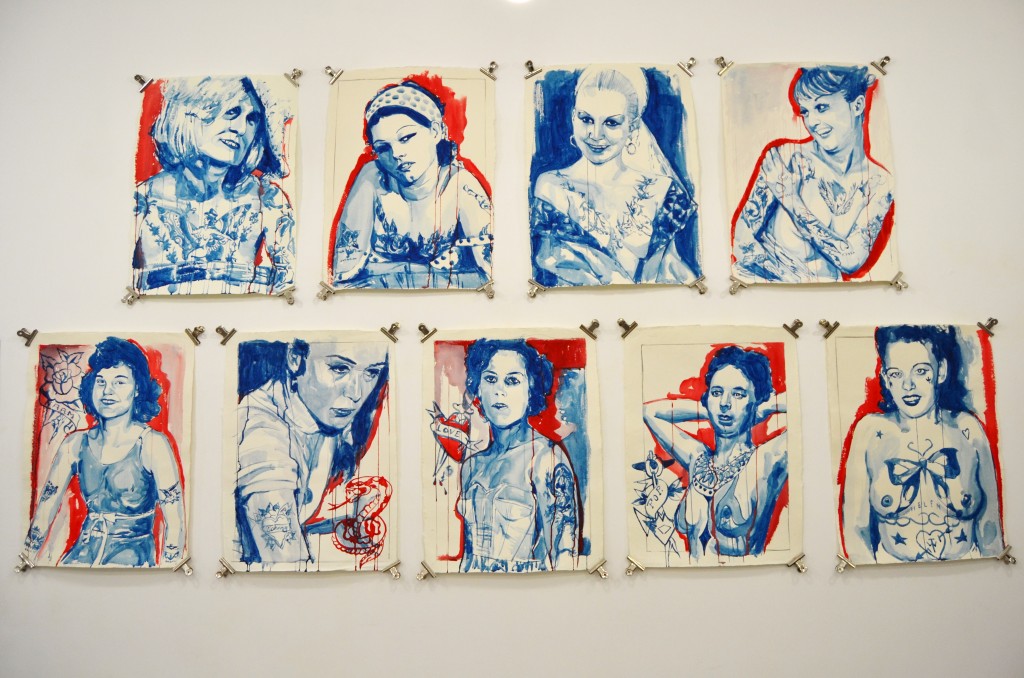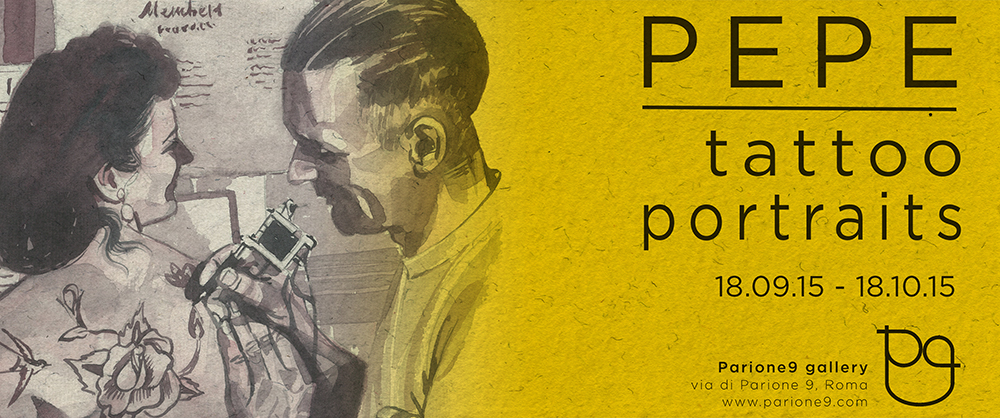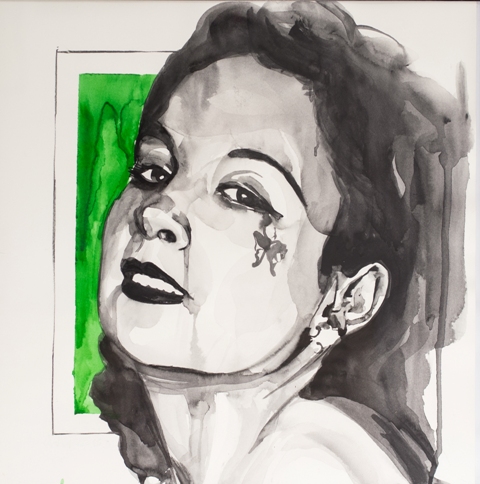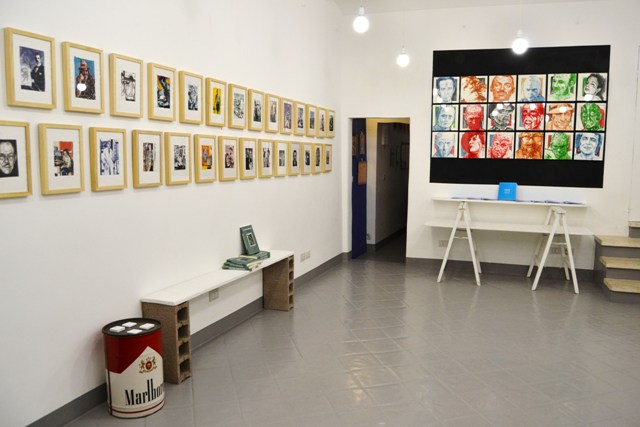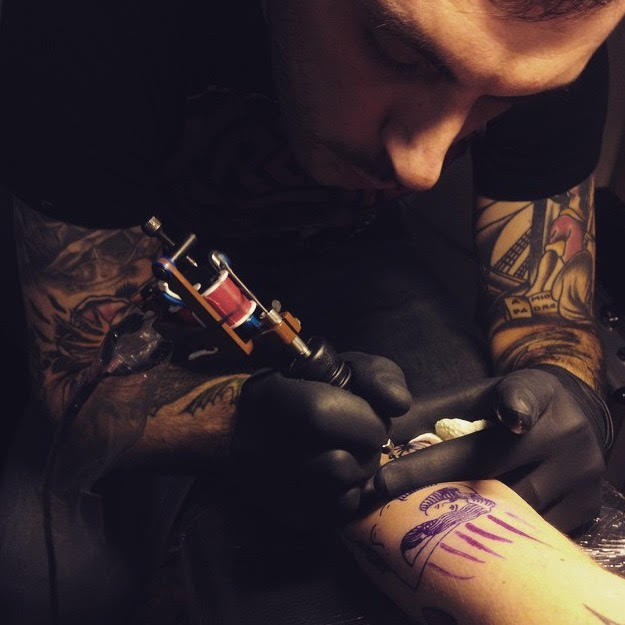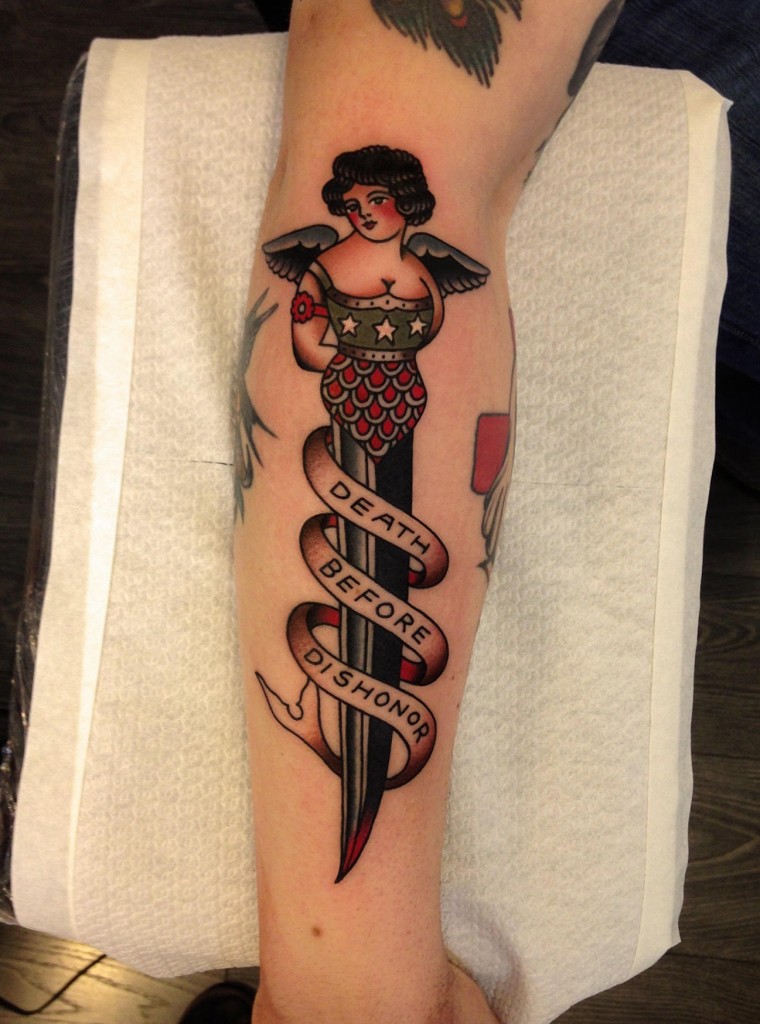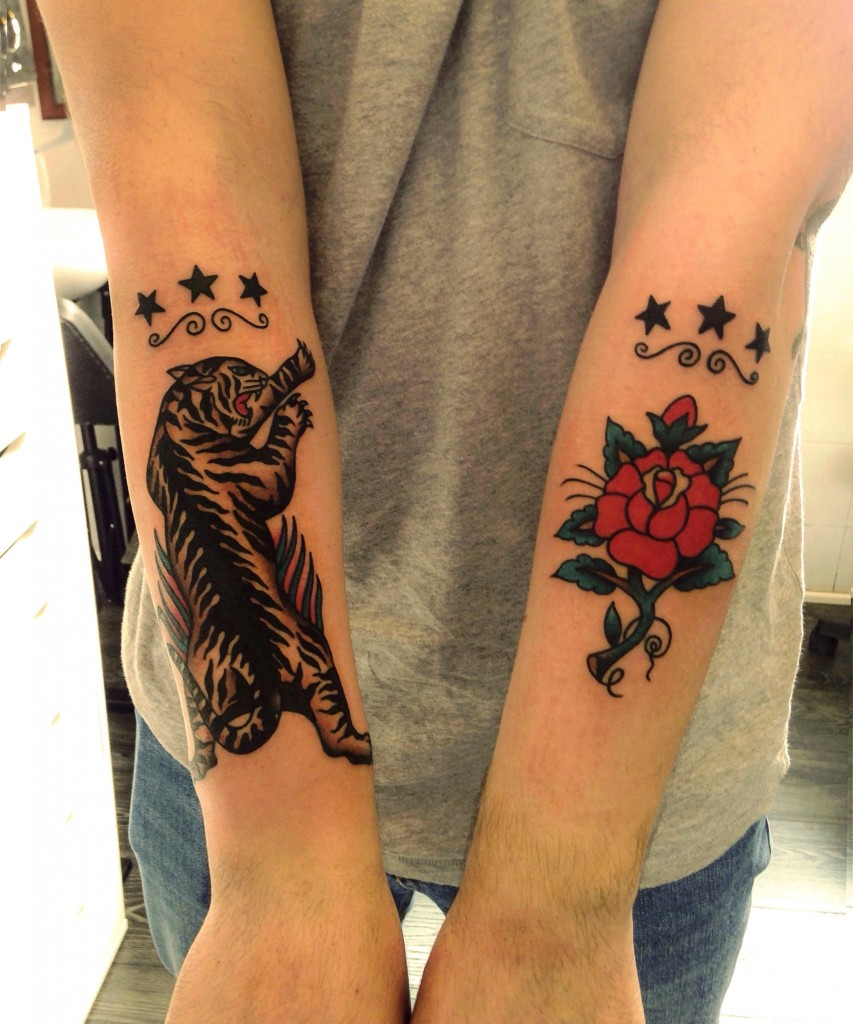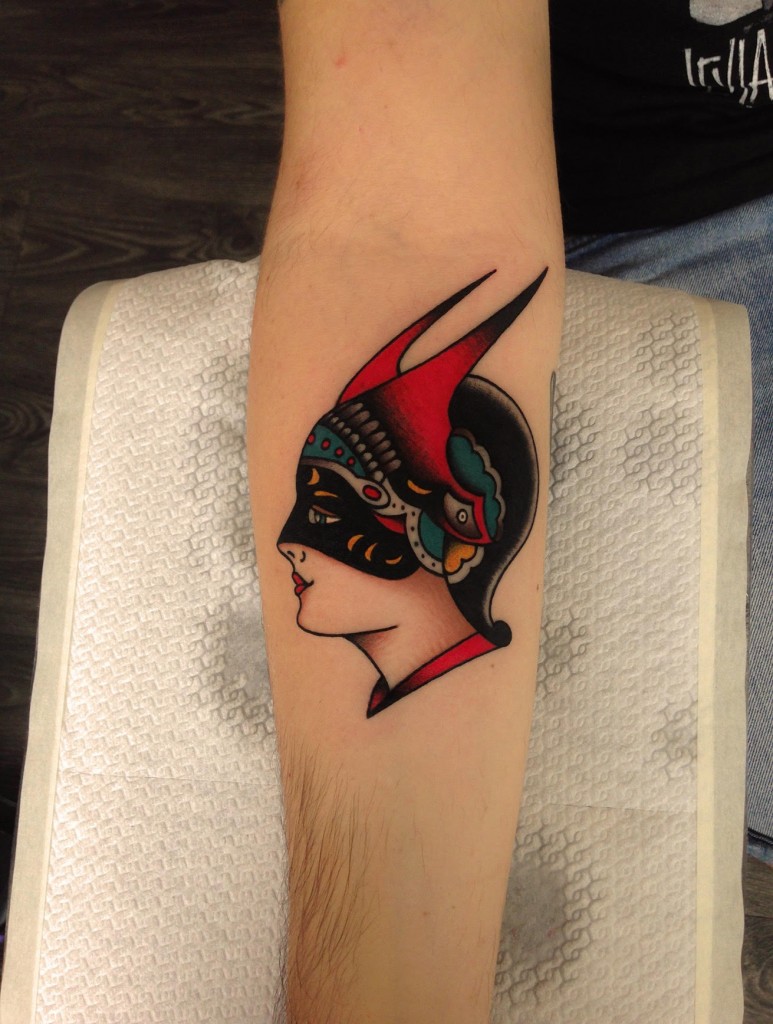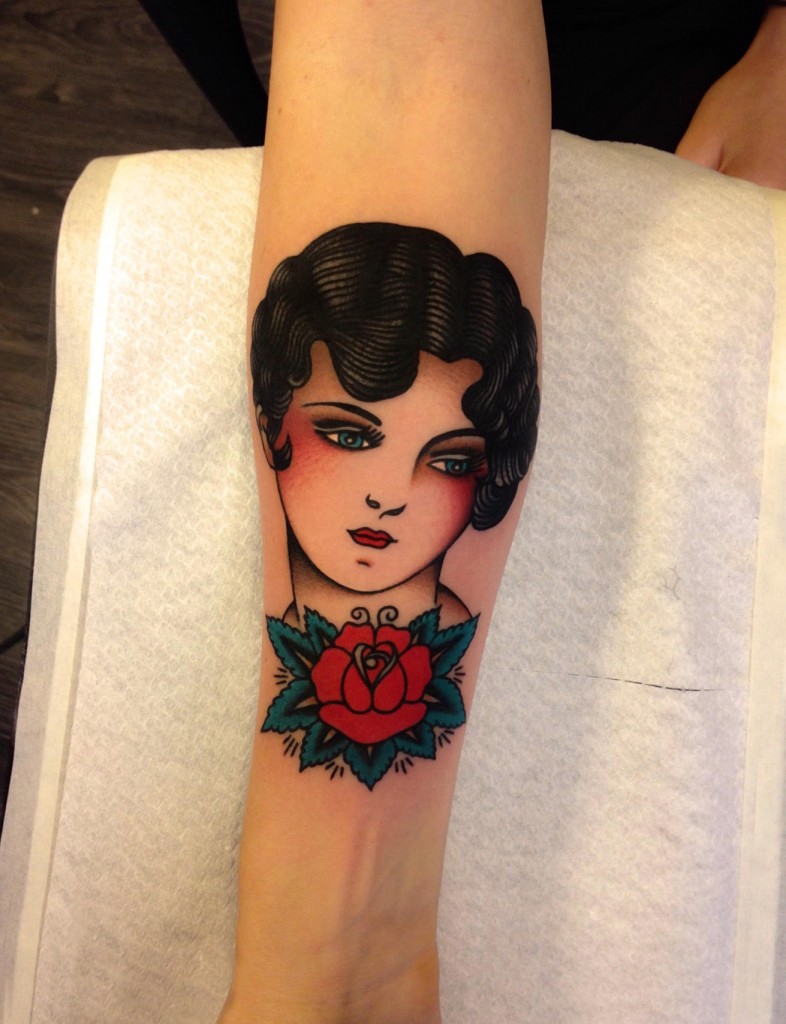Our Italian contributor Ilaria Pauletti chatted to Rossana Calbi the curator of Exit Voto, the latest exhibition at Parione9 in Rome, on until August, 7th…
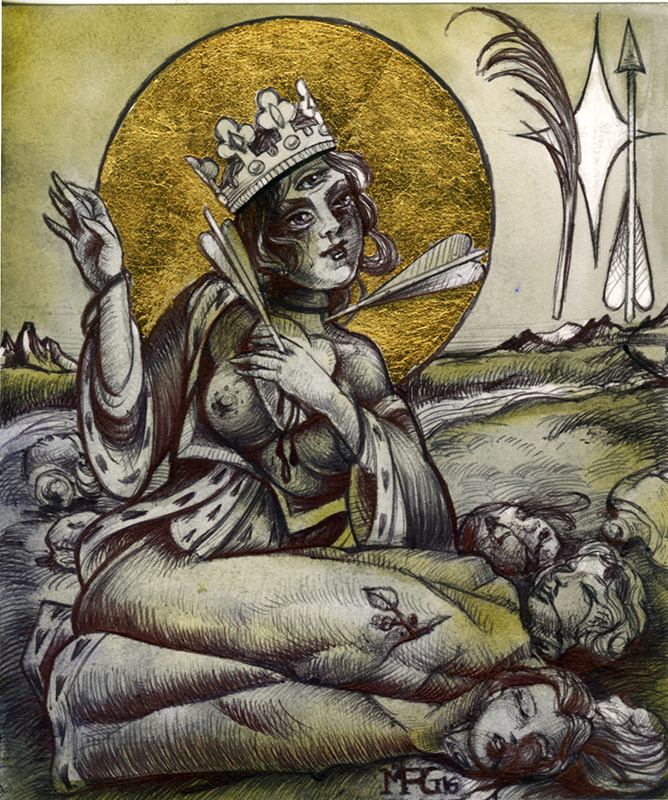
More than 100 artists were involved in Rossana’s Exit Voto, and among them are some talented Italian tattooists including Miss Juliet, Diletta Lembo and Morg Armeni.
Everyone of the chosen artists had the task of recreating a holy picture on paper. They were all completely free from any obligation or limitations, Rossana simply choose the theme and the medium.
As you may already know, ex-voto is an offering given in order to fulfil a vow, normally the offerings are given to saints or divinities in gratitude or devotion (hence the Latin term, short for ex voto suscepto, “from the vow made”).
Rossana played with this ancient term to show a way that we can exit or enter the holiness that can be found in the everyday, and a way to explore other’s affinities with the divine.
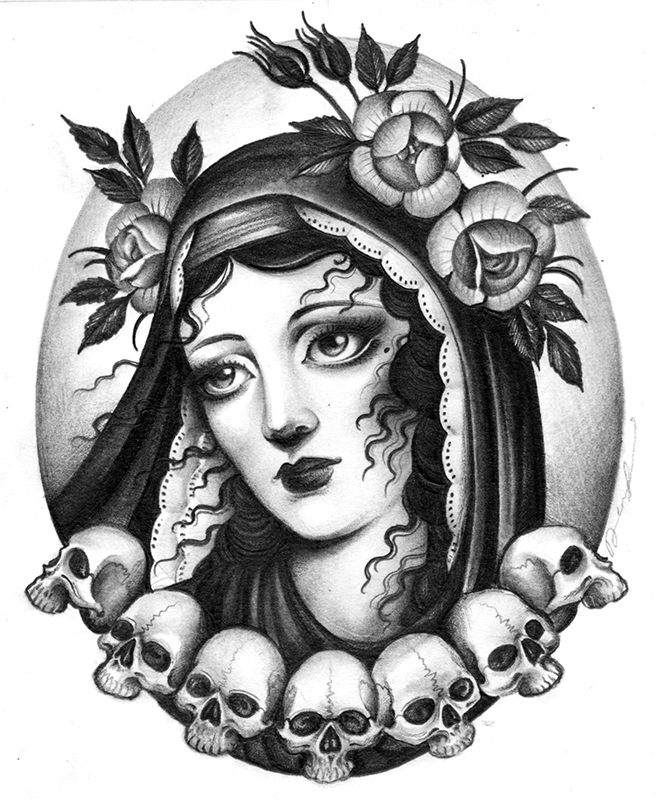 When did the idea of this ambitious project come to you, how did it evolve to become what it is now exposed in the Roman gallery?
When did the idea of this ambitious project come to you, how did it evolve to become what it is now exposed in the Roman gallery?
The theme of the representation of holiness has interested me for a long time. In 2011 I curated the exhibition Carpe Viam in Elsa Morante multi-functional complex of Rome, in that case the idea was to understand the artistic representation of holiness along the way. In that project were artists who have also been involved in EXIT VOTO, Marianna Pisanu and Pelin Santilli. Following Virgil’s admonition, carpe viam, I embarked on this journey and last year I decided to work with a hundred artists that could reinvent the holy pictures that I saw in the drawers of my grandmother’s home.
Have you commissioned a representation of each saint, giving total control to the artist or have you given them some guidelines? The only instructions I give when curating an exhibition is the theme, format, and in this case the medium- paper. What interests me and what I think is gripping is the development of each project, I love to see how each artist evolves the theme with different techniques and perspectives.
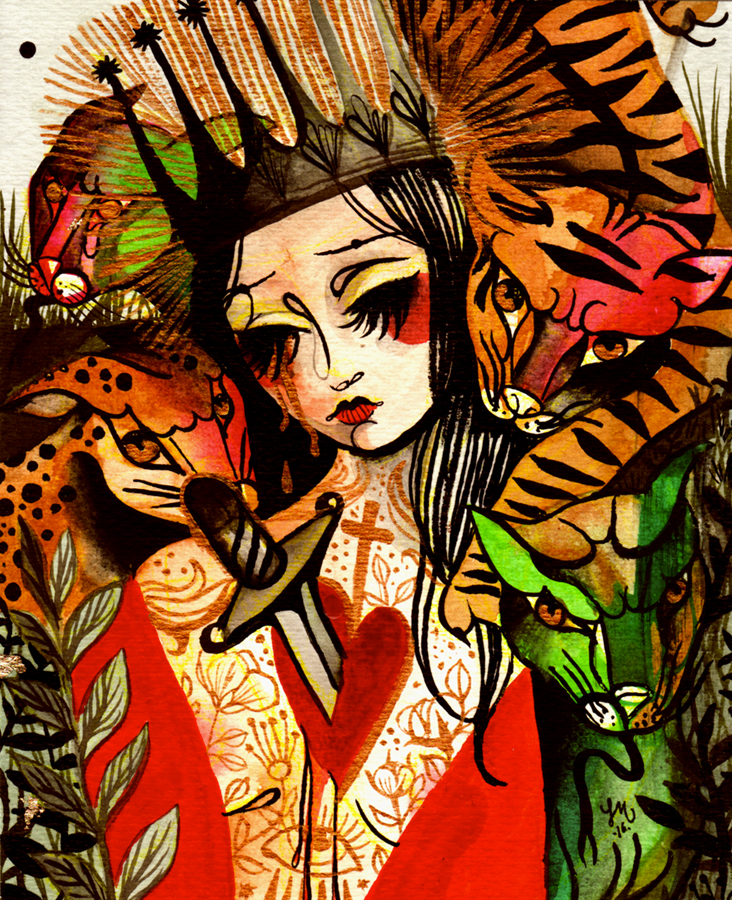
When did you decide to include tattooists and not just artists or painters? I do not make a distinction between the arts: cartoonists, illustrators, painters and tattoo artists for me are always just artists. I work without categorising the expression and choices of any artist.
What is your personal relationship with the faith?
I need to believe in something greater than me, I need to do this because I need a warning and above all hope.
And with the art of tattooing?
I was interested in the tattoo world when I was younger. I’m always very curious to see the pictures and study the ties they have with the people. Tattooing represents the evolution of symbols on the skin. Understanding the choices and the need to have a mark on the skin means you understand a lot about the individual and also of the group.
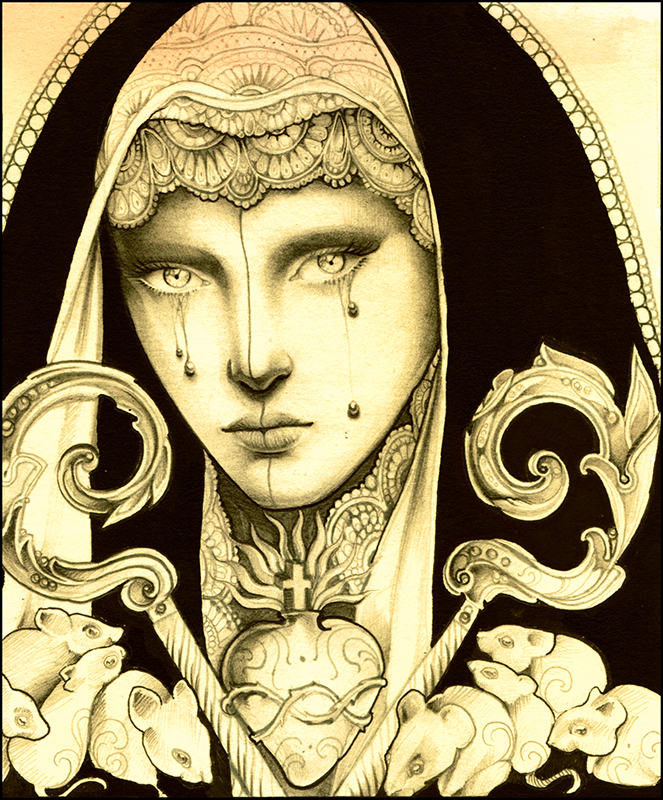
I personally think that tattooing is an act of faith, about trusting yourself. Deciding to change your body, to explore a feeling or taking control of your body, is an important gesture. What do you think about it? Do you have any tattoos? I got a tattoo of a lily when I was 18, and I never liked the result. The ink exploded transforming the design into something poorly defined. It took me years to trust a tattoo artist again. Well, I chose Nicoz Balboa to cover the tattoo on my shoulder with another lily, that should have been there in the first place.
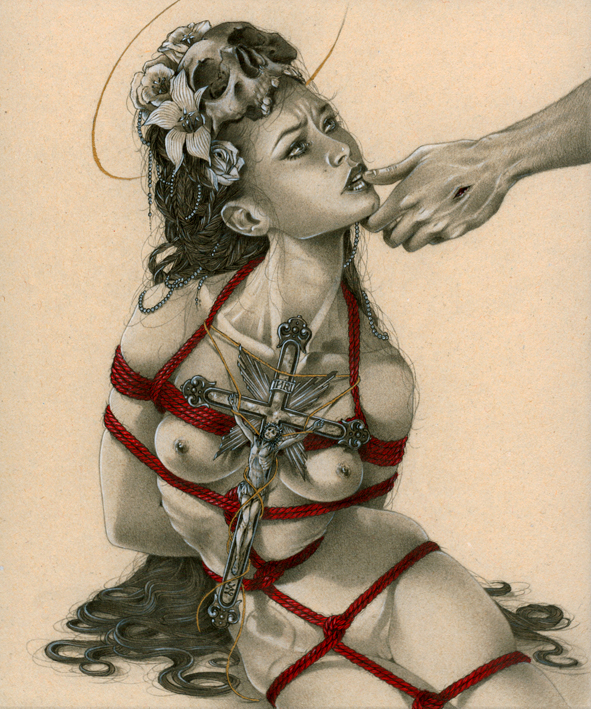
What is the Exit Voto that represents you the most? The holy picture that struck me the most is the ‘Maddalena Penitente (Penitent Magdalene)’ by Zoe Lacchei. As I said before I do not give guidance on the realisation of the work, but Zoe Lacchei heard what I was trying to produce with the title. But there are also works that I have enjoyed and that can eliminate the heaviness of my spirit, including the ‘Saint Honoré’ painting by Riccardo Bucchioni.
